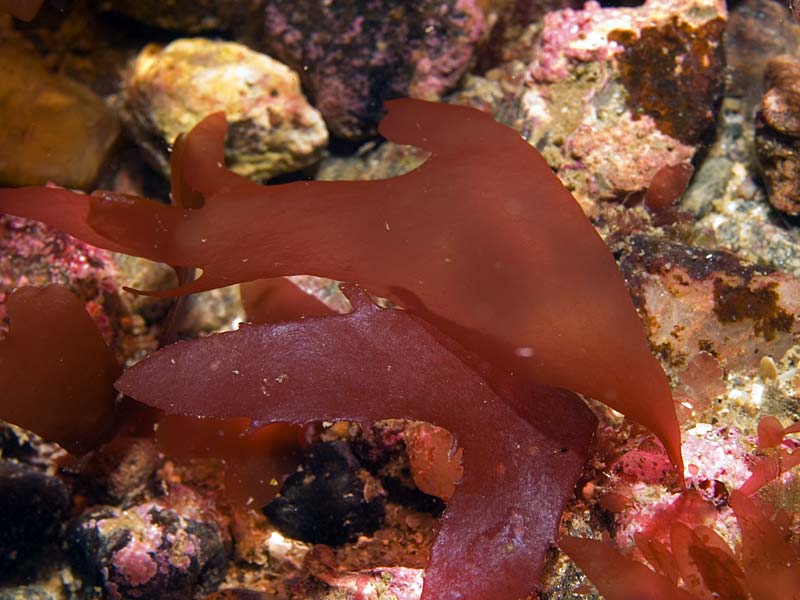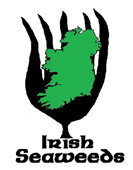Halarachnion ligulatum (Woodward) Kützing

Red Bay, Co. Antrim, Northern Ireland. 18 m. 15 June 2006. Calliblepharis ciliata below and behind.
Picture © Bernard Picton, Ulster Museum.
The tetraporophyte is known as Cruoria rosea (P.L. Crouan et H.M. Crouan) P.L. Crouan et H.M. Crouan, at least partly
Description: Gametophyte are thin, filmy to subcartilaginous,
deep brownish red, flattened fronds, 500 mm long, simple to much-divided
with very narrow segments, arising from a small basal disc. Often marginally
and superficially proliferous. Tetrasporophyte is known as the Cruoria rosea-phase
and forms thin, rounded crusts on shells, stones and maerl fragments in
the subtidal (nn m).
Habitat: Gametophytes are annual (most obvious in April-June)
and occur on rock, stones, shells, and maerl in spring and early summer in the shallow subtidal, although isolated plants may occur to 32 m, widely distributed, frequent. Tetrasporophytes
occur on maerl, and reproduce by tetrasporangia all year around.
Distribution: Widespread, mainly western in the British Isles from the Shetlands to the Channel Islands. Europe: the Mediterranean, Spain, France, Denmark, Helgoland, Denmark and the Baltic. South to the Canary Islands and Morocco.
Similar species: Another annual, Halymenia latifolia Kützing, is more delicate, is usually elongated and tongue-like, occurs later in the year (July-November) and is very rare on western and southern shores, where it occurs exclusively on maerl.
Key characteristics: The gametophytes are filmy and delicate,
and lack veins or frilly margins. Situation (shallow subtidal) and time
of year (April-June) are helpful in making an identification.
Link: Algaebase
Species list





